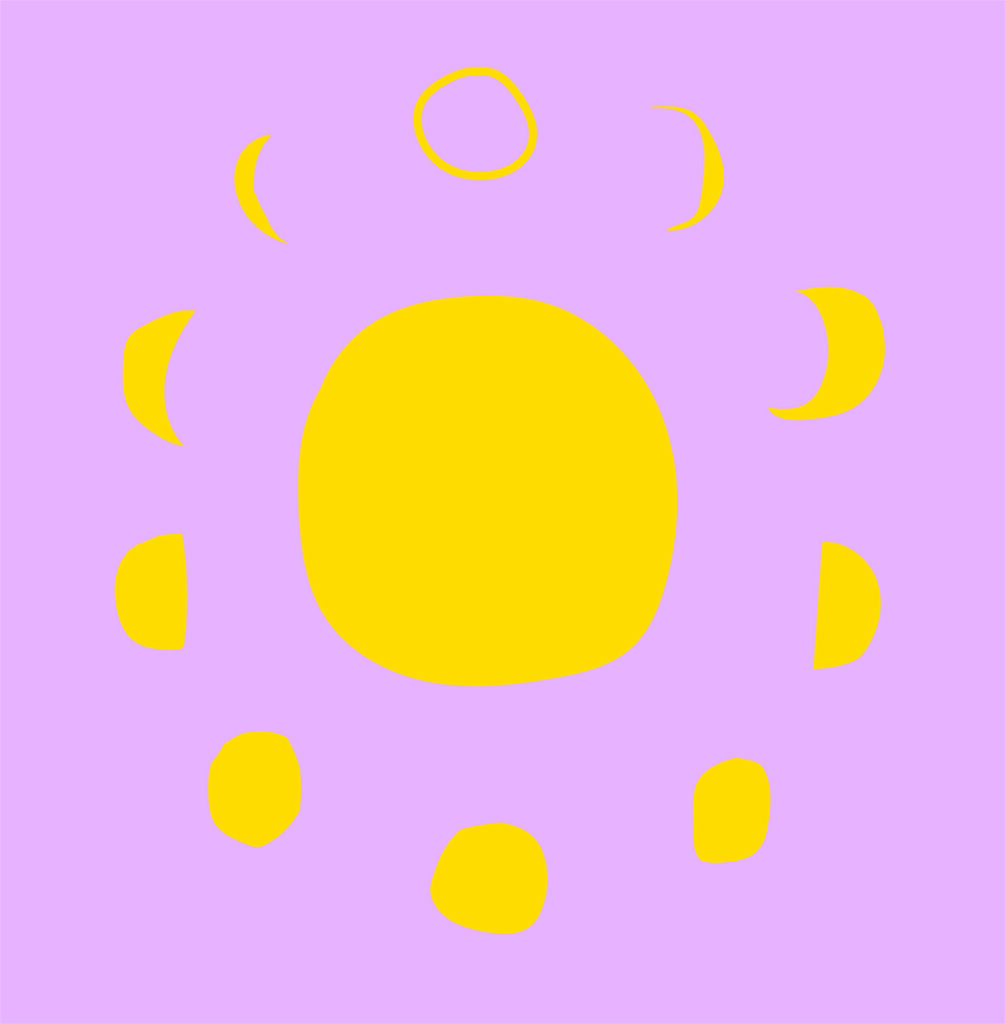In today’s fractured world, one thing we all have in common is standing on the same earth and looking up at the same beautiful moon. She transcends gender, race, religion, politics—all measures of separation.
The moon travels along the same path as the sun. Since time immemorial, they have been looked up to in order to determine when to plant and when to harvest, when to mate and when to nurture, when to hunt and when to rest. They are the original navigation system for life on Earth.
Modern cultures have nearly abandoned the sun and moon’s steady guidance and replaced it with man-made technologies. Those who still choose to pay attention to nature tend to have a mysterious insight into their own physical cycles and phases. A woman’s body has the ability to sync up with these rhythms, illuminating a cadence of emotional sensitivity, fertility, and renewal, as well as times to be creative and gather in community.
The sun, supplemented by the stars, moon, and fire, were the original sources of light. Light causes us to produce serotonin, a neurotransmitter signaling to digestion, sexual drive, moods, and more. In the absence of light, we produce melatonin, a hormone that regulates a healthy sleep cycle. When light reappears in the morning, serotonin is the alarm that signals us to wake up and meet the day again.
This daily cycle is called circadian rhythm. Melatonin also follows a circannual, or seasonal, rhythm, which has been tested in many mammals and birds to govern their mating seasons and coat growth cycles. Perhaps the circannual rhythm was more obvious in humans before we became domesticated, yet since we too are mammals, one would think that melatonin plays a similar role in our seasonal and reproductive cycles as well. When we look at it this way, we see that the first endocrine system disruptor is the advent of artificial light.
If the sun governs all these systems, what does the moon do differently? Most obviously, the moon pulls the waters of the world. Oceans tides rise and fall at her beck and call. The waters of the ocean are fully surrendered to her, and in moments when the waters whirl outside of her rhythm, there is chaos and destruction.
We know that humans are made of roughly 70 percent water. Wouldn’t it be ignorant (or a dysfunction of the ego) to suggest that she’s not affecting us too? And that our reliance on unnatural light, keeping us up at night and crashing during the day, is separating us from both sun and moon’s benefits? The good news is it is easy to (re)attune to the moon. The cycle resets every twenty-eight-ish days, beginning on the new moon. There are four easily identifiable phases. Each lasts approximately seven days. The highlighted moon phase lands in the middle of each of the seven days.
Jana Roemer is the creator of Astro Nidras, a Yoga Nidra practice themed in alignment with the current astrological weather. She’s a Canadian living in California, an astrologer, yoga teacher, yoga nidra guide, mama, and woman on a mission to help individuals awaken to their true power.






